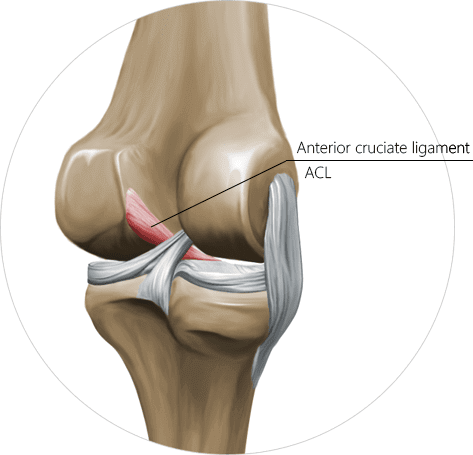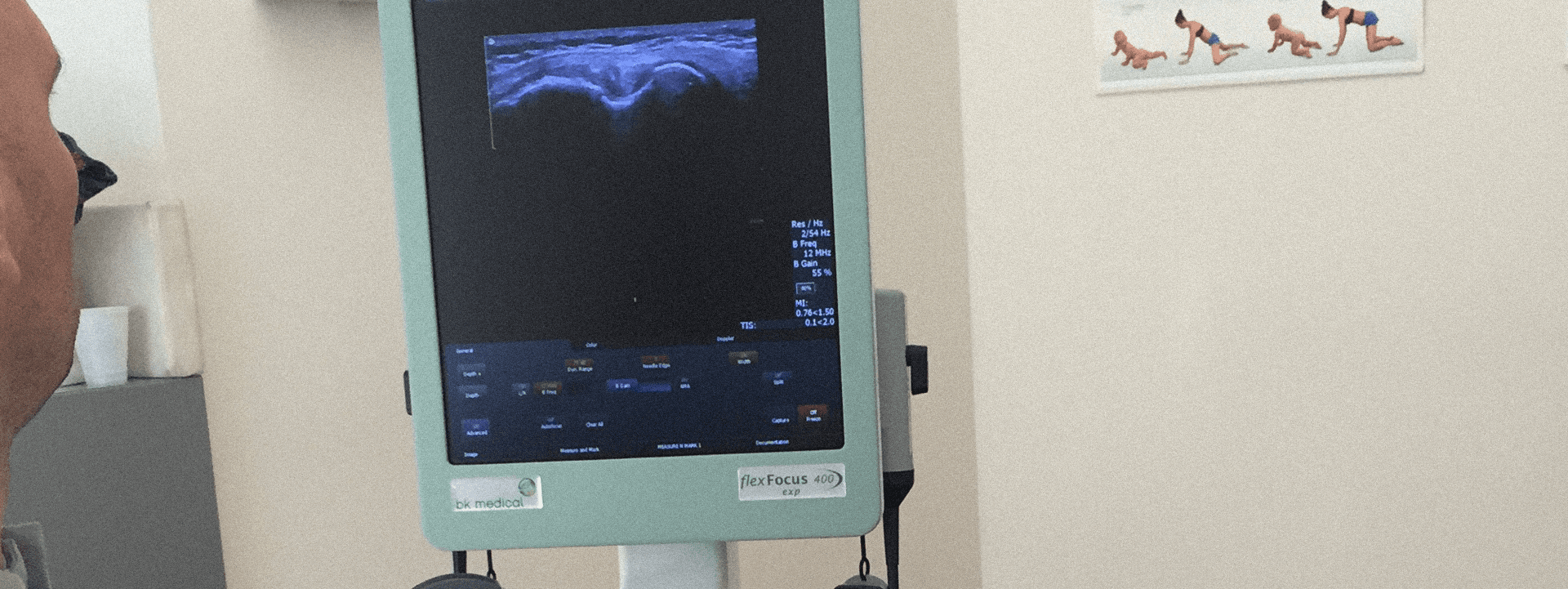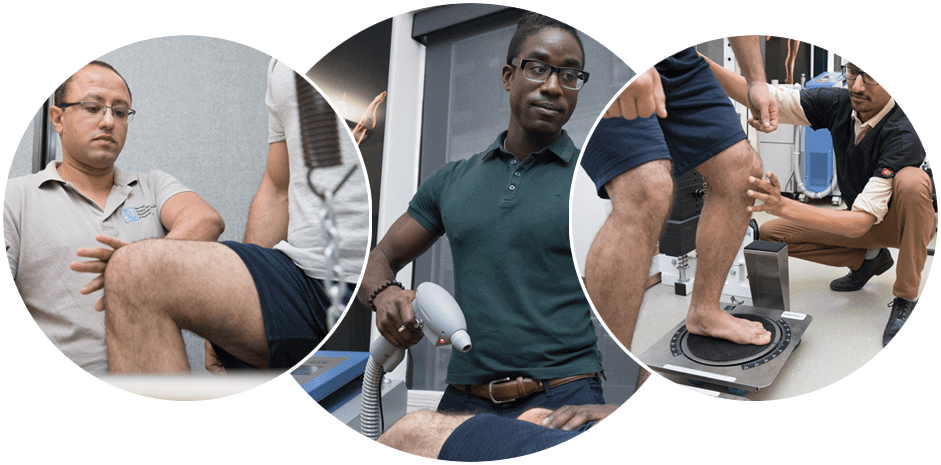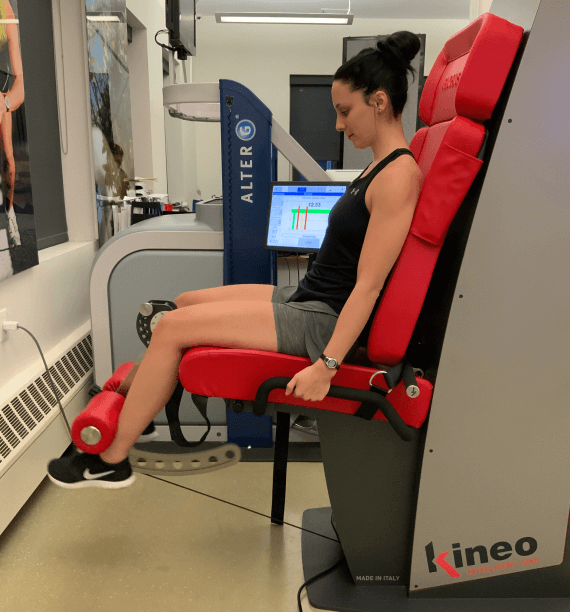Probably one of the most common complaints among sports men and women is the knee pain. Strenuous exercise and extra stress added on the lower extremities causes added wear and tear to the knee ligaments. The most common of the injuries to the knee is the anterior cruciate ligament injury, and can happen during both cardio and weight training exercises. Statistically, each year in the United States, well over 200 thousand people suffer an injury to the anterior cruciate ligament, with approximately half of those cases requiring knee reconstruction. Only 30% of those are attained through physical contact, as in a contact sport such as American Football. Below, we will be looking in depth as to the epidemiology and the treatment of this injury in the New York City’s Dynamic Neuromuscular Rehabilitation clinic.
In order to understand this injury, it is useful to understand the anatomy of the knee. The knee itself consists of three bones – the femur (or the thigh bone), tibia bone (or the shin bone), and on top of those two in the knee, the patella (or the kneecap) is located as a protective barrier. These three bones are joined together by four main ligaments that both enable the movement of the knee, act as a stabilizer and finally, hold the bones together. The four ligaments are divided into two groups – the two collateral ligaments that connect the knee on the sides, and the two cruciate ligaments, that are located in the back and the front of the knee. The medial and the lateral collateral ligaments enable the movement of the knee sideways, and stabilize the knee to prevent any unnatural movement. Meanwhile, the anterior and the posterior cruciate ligaments that cross each other from the back to the front of the knee enable the back and forward movement of the knee.

The causes for this injury may be numerous, in terms of which activity may have impacted it. However, it is not an injury that happens due to contact, and rather occurs when landing from a jump or doing a sudden turn. When the thigh’s femur bone and the shin bone twist in the opposite directions, this causes the trauma. This results in a limited spectrum of motion for the person, pain, and depending on the severity of the injury, the ability of the knee to support the body weight.
The anterior cruciate ligament, which is located in the front part of the knee and connects the tibia and the femur bones, can become either partially or completely torn, in addition to the usual repetitive strain injury (e.g. tendinitis) may occur with wear and tear of the ligament.
In the instances of a tendinitis, which is an inflammation to the ligament that oftentimes occurs do the repetitive movements or additional strain of the knee, the person may feel a tingling
If during any activity, you feel a snapping in your knee, or any type of pain, it is vital to immediately stop the activity and see a specialist as soon as possible. This is important since the pain and inflammation may subside within a couple of weeks and give a false feeling that the knee is alright, while further damage is being done to the knee, and it becomes more unstable.
Depending on the amount of pain the person feels, it can be established how severe an injury is. There are three levels of pain when it comes to an ACL injury:
In the instance of an injury it is essential to see a medical specialist immediately, and in the meantime address the issue through the R.I.C.E. methodology, as it has positive effects on the reduction and temporary elimination of pain, as it helps decrease the inflammation. After a while, if the injury was not a simple sprain, instability problems start being apparent, leading to problems with gait, which further affects more joints as strain on them may not distributed equally. The RICE methodology is universally applied for sprains and after any injury and involves the following elements: Rest after feeling pain in the knee and discontinue the activity you were previously doing, apply Ice and Compression to the knee as it helps contain inflammation, and keep the leg Elevated.

But these are the methods described to deal with the injury, a mild one rather. Naturally, it is impossible to prevent an injury entirely, but a number of measures may be taken to decrease such a risk. These involve:

The Anterior cruciate ligament can be treated and rehabbed through a number of methods, depending on the extent of the sprain and tear in the ligament. Although, for severe ruptures of the ligament, surgery is recommended by the orthopedic surgeons, at New York ‘s Dynamic Neuromuscular Rehabilitation clinic, a completely different and innovative approach when dealing with this injury. With the use of acoustic pressure waves which are target the injured area, simultaneously stimulating blood circulation to the targeted zone and promoting tissue repair and cell growth, the anterior cruciate ligament rupture can be reversed. This technology is called extracorporeal shockwave therapy, which has previously been used in the breakdown processes of kidney stones, but later adapted for physiotherapeutic uses, and has shown great results in the rehabilitation of the patient from a number of injuries that previously required surgical intervention. In combination with the traditional methods of physical therapy and rehabilitation via the extracorporeal shockwave technology, modern physiotherapy practice has been taken a whole new level of noninvasive treatment of the more severe injuries, that previously could not be rehabilitated. NYDNRehab offers an individualized approach to each of its patients and provides both the diagnostics and treatment in one place, using the latest technologies and most advanced treatment methods in the field.


October 17, 2025
Tearing of the anterior cruciate ligament (ALC) is the most common athletic injury in field sports like soccer, rugby and football, as well as in basketball and a number of other sports that require rapid deceleration and sudden directional changes. Nearly 100,000 Americans suffer an ACL injury each year, the majority being female athletes.
When tearing is severe, surgical knee reconstruction is often sought by athletes to give up their sport.
The femur of the thigh, and the tibia and fibula of the lower leg come together front and back.
Ligament injuries are not usually caused by a collision with another player, but are more often the result of to stabilize it, rupture or tearing occurs.
A ligament can be either partially or completely to repair. A partial tear may make the knee less stable, and a complete tear can severely limit movement, making surgical reconstruction an attractive, but often unnecessary, option for many athletes.
When a knee injury occurs on the playing field, it should not be ignored. Immediate diagnosis and treatment is crucial to treat a knee injury can be career-ending for any athlete.
A knee injury should be treated immediately with rest, ice, compression and elevation, as with any soft tissue injury, to determine the location and severity of damage.
At NYDNRehab, we use real-time diagnostic ultrasound to view the images, meaning treatment can be undertaken immediately.
In the acute (early) stages of injury, attention is focused on reducing pain and inflammation, and stabilizing the joint to protect it and prevent further damage. As inflammation and pain diminish, rehabilitation can begin in earnest.
One innovative treatment approach that has been highly successful in treating and repairing to play with confidence.
The sports medicine team at NYDNR takes an individualized approach to re-injury that can end an athlete’s career.
We use the latest technology and most innovative therapies to help our athletes heal, physically and mentally. Some of our approaches at NYDNR include:
Our goal at NYDNR is to play with confidence, strength and the capacity for optimal performance.

Dr. Lev Kalika is a world-recognized expert in musculoskeletal medicine. with 20+ years of clinical experience in diagnostic musculoskeletal ultrasonography, rehabilitative sports medicine and conservative orthopedics. In addition to operating his clinical practice in Manhattan, he regularly publishes peer-reviewed research on ultrasound-guided therapies and procedures. He serves as a peer reviewer for Springer Nature.
Dr. Kalika is an esteemed member of multiple professional organizations, including: